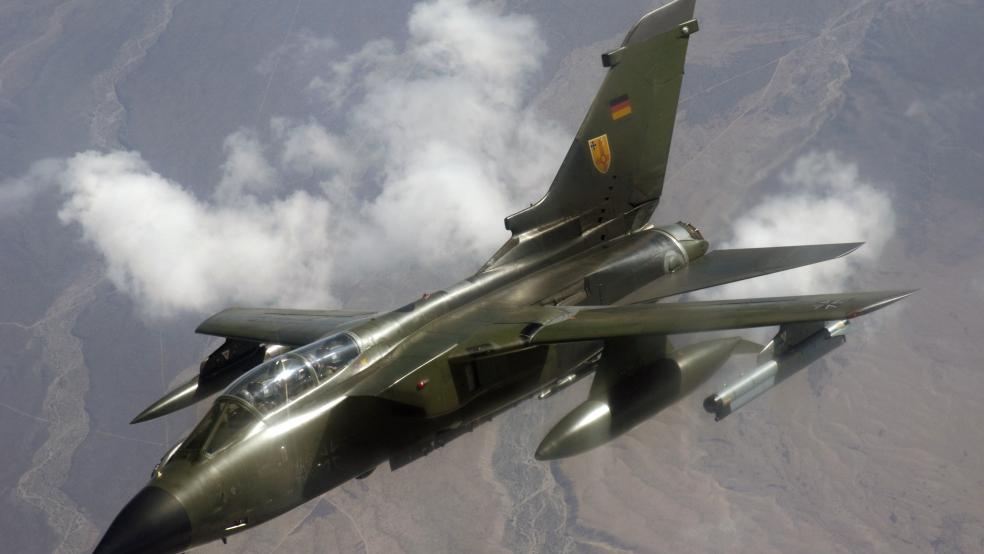It seems U.S. fighter jets aren’t the only ones prone to head-scratching technological problems.
Six German Tornado jets deployed to Syria to participate in the fight against ISIS can’t fly at night because the cockpit lights are too bright for pilots, a local German paper reports, according to Agence France-Presse.
Related: Russia’s Military Buildup Continues with Big New Fighter Jet Order
The aircraft in question are outfitted with high-resolution infrared surveillance equipment and are supposed to be able to conduct reconnaissance missions during the day or night, regardless of weather conditions. That the same gear is blinding the pilots is a bit of a hiccup, to say the least.
"It is possible that the night goggles worn by pilots result in reflections," a defense ministry spokesman told the news agency, adding that right now there is currently no need to fly the aircraft.
He said officials hope the problem can be fixed within the next two weeks.
Related: Why the Air Force Will Keep the A-10 Warthog Flying – for Now
Germany sent the warplanes to assist the U.S.-led coalition effort to help gather information against the terror group following the ISIS attacks in Paris that killed 130 people.
Last month a defense ministry report revealed that only 29 of Berlin’s 66 Tornado jets are airworthy, mostly because of overdue or poor repairs.
The multi-role strike aircraft was developed in the 1970s by United Kingdom, Germany, Italy and the Netherlands. Besides Germany, the Tornado is still flown by the United Kingdom, Italy and Saudi Arabia. The aircraft’s variants carry different avionics and equipment, depending on their mission.





